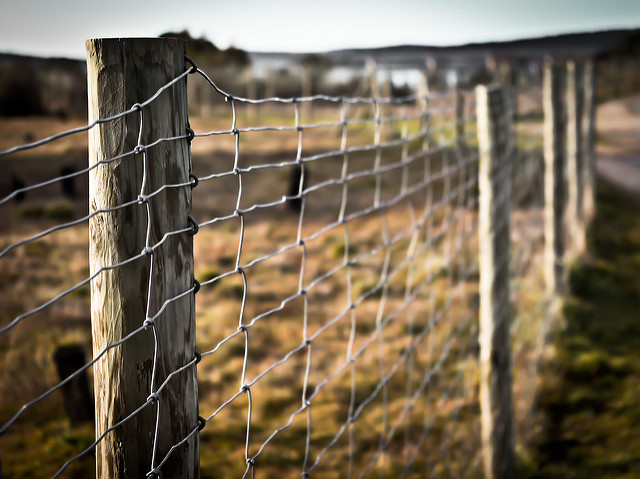Multi-Site Ministries: Fences and Freedom

If you’re a part of a multi-anything: multi-site church, multi-leader ministry, or even a multi-staff/volunteer team, this is a topic we need to cover.
As the old adage goes, we sometimes find ourselves with too many chiefs and not enough indians, or too many cooks in the kitchen, or too many chocolate chips in the cookie (of course I made that last adage up, because there’s no such thing). Wherever people multiply, lines of communication get blurred. So if you’re a part of multi-anything, it helps to know a few things: who is calling the shots? Who is the decision maker? What is mandated? What is modeled? What can I do that won’t get me fired?
If these questions aren’t answered, you’ll be on the giving or receiving end of confusion, frustration, anger, wasted energy, and burnout. So how do we start the conversation?
We build fences.
Perhaps you’ve heard the apocryphal story of the playground fence study.[ref]I call it apocryphal because it’s one of those stories that everyone talks about, but no one can find the primary source. If you have an inside scoop, let’s talk. [/ref] In short, researchers determined that when elementary school children were on a fence-less playground, they were more wary, more fearful, and stayed closer to their teacher. But add a few chain links and a gate, and boom – the kids spread their wings and explored new territory. (See the much better two minute version here.)
When leaders build good fences, they create environments for their teams to run free.
[Tweet “When leaders build good fences, they create environments for their teams to run free.”]
It sounds counter-intuitive, but hang with me for a few more bullet points. I’ve found it helpful to build the fences conversation around four areas:
- Church DNA (who). Before your church launches another ministry, another venue, or another campus, your church needs to know exactly who you are. Greg Ligon asks, “What key component(s) must be transferred from site to site, from venue to venue, to ensure the effective development of a new location? Key to replication is a clear understanding of what is foundational and what stands at the periphery.” [ref]Greg Ligon, The Multi-Site Church Revolution (Grand Rapids: Zondervan Publishing House, 2006), 126. [/ref]
- Vision (why). You can have task lists a couple of miles long, but until you know the why behind your what, you will only create pre-programmed robots who carry out your bidding. That’s good for dictators and maniacal robot builders; not so good for leaders and equippers who want to build the saints for the work of the ministry.
- Mission (what). The why and the what matters. You’ve asked the Why do we do this? question. Now it’s time for What are we doing? This is a question of mission: what moves your organization forward? What builds alignment? What are you rallying behind? What helps people see Jesus? What tangible things are going to help people take their next step?
- (some) Systems (how). I say some systems, not all. Some systems may be transferable to all sites: the way you screen volunteers or train leaders or structure teams. But many systems will be site-specific: the small group sign ups at one campus may not work as well as the procedures at another. The set up systems at a mobile campus will be much more involved than at a permanent site. This is – at best – the infamous “tension to be managed.” Systems are tools, whether they are systems developed at a central level and pushed out to campuses, or systems that are birthed at each site. But like any tools, they will need to be vetted for usability, improved upon, and perhaps replaced altogether.
When you combine those four areas, they build something that looks a lot like a fence:
Now again, that sounds rather restrictive, and leaders aren’t known for embracing restrictions. So how do we reconcile empowering multi-site leaders when multiple fences are in place?
We grant freedom.
Let’s go back to the playground study: those elementary school kids actually found comfort in the constriction. By implementing clear boundaries, they not only could outline the safe areas, they expanded the square footage that they traversed. Our who, why, what, and how form the safety perimeter. They help create some tangible lines that we don’t cross, not because it’s dangerous, but because it’s defining. DNA, mission, vision, and some systems define our church and help us further define our ministries.
So what happens in that white space inside the fence? Well, just about anything, actually. Think back to your time on the playground: I’ll bet that, like me, those were among the most creative days of your life. A few sticks became an armory of swords, monkey bars became a mountaintop fortress, and a high-flying swing set was the next best thing to a rocket ship to the moon.
In the same way, the white space grants a tremendous amount of freedom to campus leadership. With the boundaries clearly defined, creativity can flourish. New ideas can be generated. Best practices can be revealed. And staff members, ministry leaders, and volunteers can creatively implement new ways of pointing people to Jesus.
So what’s your take on fences vs. freedom? How does this work – or fail – across your own multiple areas of ministry? What are the holes in the fences that I’m missing? Let’s continue the conversation below.


2 Responses
[…] have been tremendous. We have more time to be at more campuses. We are able to experiment with standards and best practices. We’re able to give and receive feedback on how ministries are […]
[…] Fences and Freedom […]